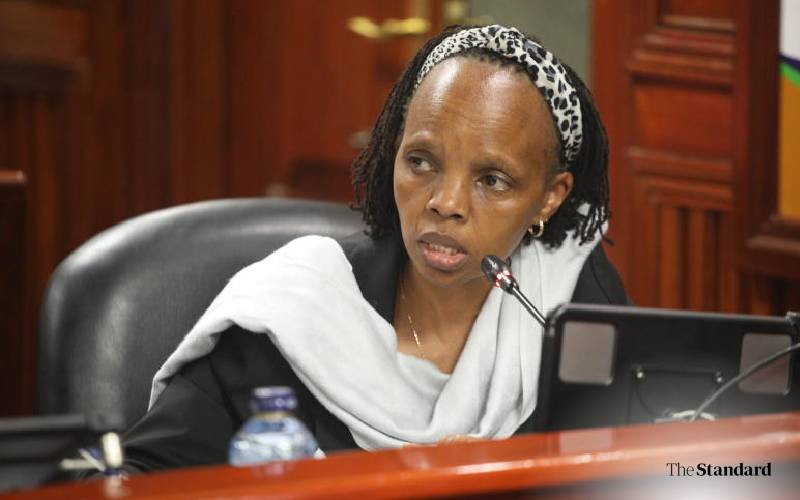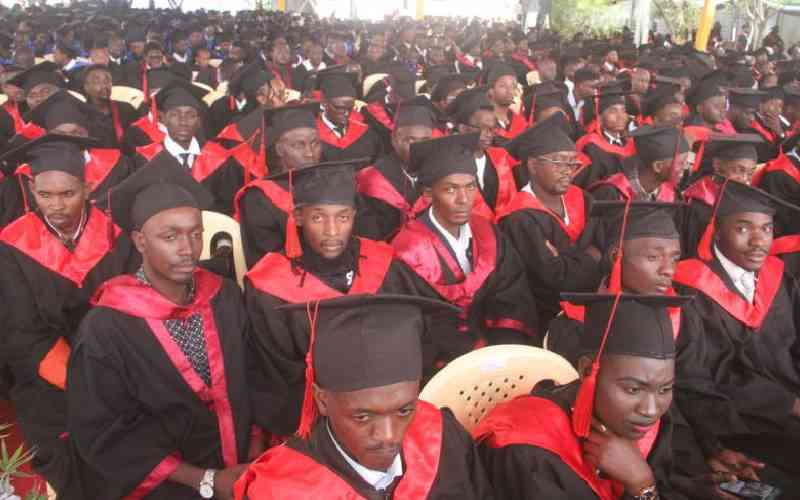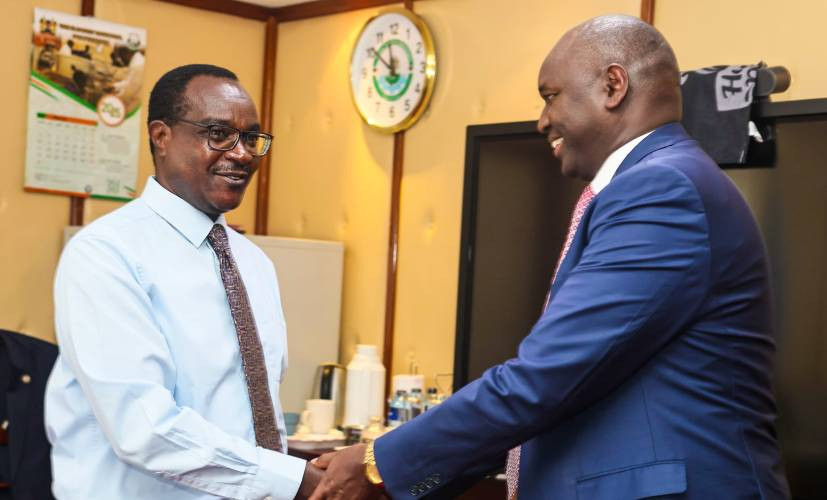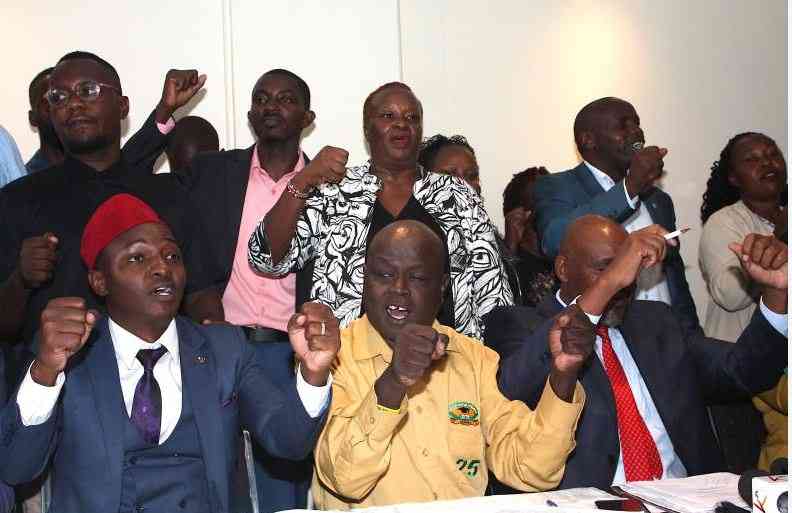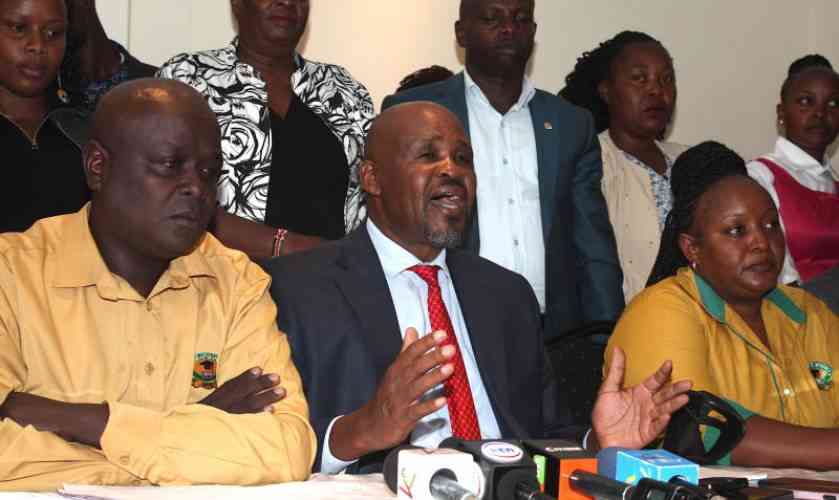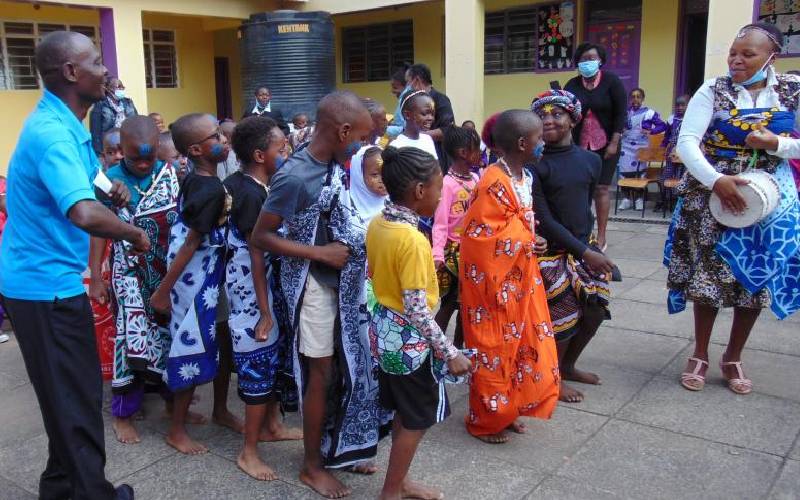
Teachers and pupils at Starlight Springs Academy in Eastlands, Nairobi, during a cultural day under the Competency-Based Curriculum (CBC).
Last week, we interrogated the why. Why it is important for the so-called indigenous crafts to the incorporated into the curriculum. The benefits. What it means to the learner and the greater society. Today, we look at the how. How can these indigenous crafts be incorporated into the curriculum, and effectively so?
The incorporation of these crafts into the school curriculum has the potential to trigger a positive domino effect and desired reforms in the education sector and labour market. But to realise the full potential, a number of preparatory steps must be taken.
They include training of instructors, organising for equipment such as looms, cloth, colours and threads, wood, clay or kilns, and all the necessary learning craft resources in schools. Basically, this means setting up proper infrastructure and requisite human resources.
The introduction of indigenous art and craft in our curriculum should involve locally available experts to work with children and teachers in schools.
There is hardly a community in Kenya that does not have its own craft traditions and people who still practice them. Linking craft teaching with the traditional school subjects, instead of treating them as extra-curricular add-ons, is necessary to firmly entrench work-related values and ethics.
Initiation of craft teaching should draw connections between different aspects of the chosen craft and the other subjects.
For instance, Mathematics can be linked with material and design aspects, whereas science can be taught while studying the processes involved in crafts like pottery. The subject terminologies/register specific to a craft can be utilised and ramified in language and literature classes with the help of relevant literary material (such as short stories). The social geography of a craft (for instance its practitioners, where are their products sent and sold for use, etc.) can be linked to the social/ human sciences curriculum.
Teaching crafts in school must also be seen as an aspect of art education. The existing art curriculum tends to focus on the classical traditions and ignores the folk traditions in which they are embedded. There is an urgent need to redefine the art curriculum in all major areas, for instance music, dance, theatre and the visual arts, to incorporate folk traditions and styles.
In the context of such a redefinition, craft programmes can be accommodated within a broader art education framework. This is not a plea for ignoring the other possibilities that a crafts programme can open up, such as linkages with vocational training which leads towards manufacturing skills and attitudes.
The various types of curriculum and instructional strategies used by instructors in providing art and craft training to students are: use of technologies, hands-on training, practice exercises, brainstorming, co-operative learning, experimenting, discussion and focused exploration; which makes provision of opportunities to students to investigate specific questions in-depth to complete the specific task or assignment satisfactorily, free exploration; where students observe various kinds of art and craft and develop an interest in learning them, and plan for choices; where when students are to practice artworks or crafts, instructors can allow them to make their own decisions, particularly in the case of designs and images.
However, the implementation of these curriculum and instructional strategies should be dependent upon a number of factors.
The grade levels of students, their needs and requirements, learning abilities, art and craft concepts and educational goals should be put into consideration.
It’s apparent that to promote student learning, as well as to lead to its enrichment, it is necessary for instructors to generate awareness among them in terms of aesthetics, use of modern, scientific and innovative methods and put emphasis upon group discussions, question and answer sessions and practice exercises.
Research has indicated that in India, in urban as well as rural communities, individuals are developing interest and enthusiasm in learning various forms of art and craft activities. In some cases, they learn and carry out these activities as a hobby whereas in other cases, they also implement them on a regular basis to generate a source of income and enhance their livelihoods.
In training centres, as well as in schools and higher educational institutions, there is an initiation of programmes in terms of art and craft activities. The art activities are of various kinds, including canvas painting, glass painting, tanjore painting and Madhubani painting.
Craft activities include knitting, embroidery, crochet and pottery-making. Individuals learn the activities in which they develop an interest.
India is the only country in the world with an unbroken, living vibrant tradition of crafts. While agriculture employs the largest number of people in India, the craft sector is next and sustains over 20 million practitioners. The wide geographic spread embraces all of India and covers a huge gamut of widely differing work structures and cultures.
Craft communities, using similar materials that range from clay to precious metals, work with widely differing techniques and technologies to create a rich variety of forms.
Acknowledging the importance of handicrafts in India, the National Curriculum Framework 2005 sought to integrate it into the school curriculum and formed a National Focus Group on Heritage Crafts.
The Focus Group submitted a position paper that includes several recommendations and concluded that Indian craft and its millions of practitioners are a huge and important resource of traditional knowledge and indigenous technologies that could add value to the education system. I
t was suggested that Indian crafts should be taught as a theoretical social science with a strong component of field study and applied creative activity. With the learning of craft traditions, many skills could be developed among students.
These include the consideration of the relationship between the student and environment and the inter-dependence of: societal skills, information processing, reasoning, enquiry, creative and entrepreneurial skills, and a work-related culture.
It is apparent that to augment the knowledge and understanding of the individuals, it is vital for education instructors to make use of curriculum and instructional strategies – logically, creatively and effectively.
The initiation of a new approach to art and craft training and instructional strategies are some of the key areas we should set great store by if it were to be fruitful.
Many other aspects of craft learning will emerge as being relevant to the education sector and the labour market when schools and teacher training institutions start working with artisans and craftsmen and women.
A different sense of time and rigour, personal care for the product and a sense of detail are normal features of any craft experience. Whether you embroider a handkerchief or carve a piece of wood, whether you weave a basket or mat, or you mould a clay pot or figurine, you slowly but surely enter a rhythm of self-discovery, actualisation, joy and comfort. If you practice art or craft within the confines of an ethos that guarantees individual dignity and fairness, you gain self-confidence of a kind that nothing else can give.
Education and labour stakeholders and policymakers should critically look into and explore modalities of how best to incorporate these so-called indigenous crafts into the mainstream education curriculum for the benefit of the learner, the labour market and broader society.
 The Standard Group Plc is a multi-media organization with investments in media platforms spanning newspaper print
operations, television, radio broadcasting, digital and online services. The Standard Group is recognized as a
leading multi-media house in Kenya with a key influence in matters of national and international interest.
The Standard Group Plc is a multi-media organization with investments in media platforms spanning newspaper print
operations, television, radio broadcasting, digital and online services. The Standard Group is recognized as a
leading multi-media house in Kenya with a key influence in matters of national and international interest.

